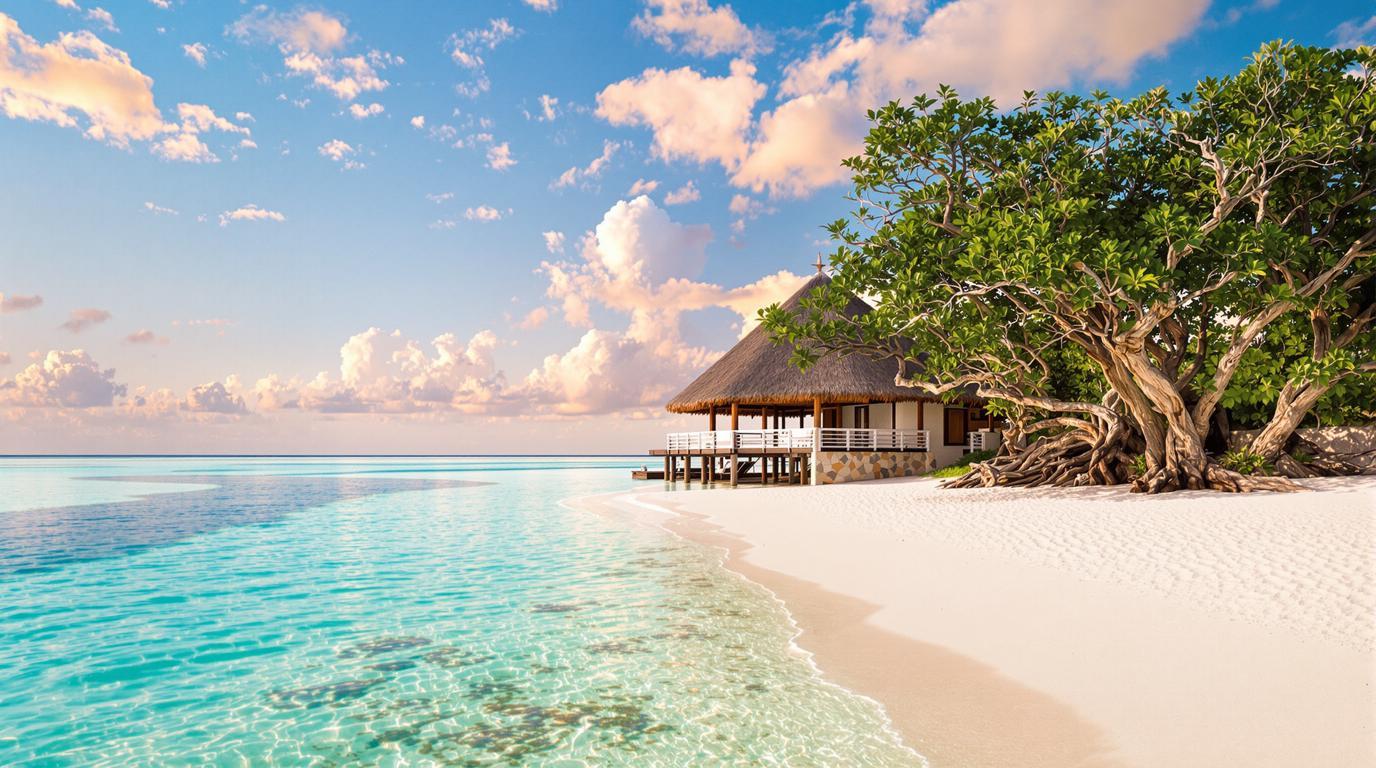Africa’s best-kept secret isn’t where you think. Off Mozambique’s northern coast lies Quilalea, a 34-hectare private island where luxury meets untamed wilderness in spectacular fashion. This coral-fringed paradise in the Quirimbas Archipelago offers something increasingly rare in our hyper-connected world: genuine seclusion amid pristine nature.
The ultimate barefoot luxury experience
Azura at Quilalea, the island’s sole accommodation, redefines exclusivity with just nine handcrafted villas scattered along pristine beaches. These seafront havens blend African-chic aesthetics with natural materials – think reclaimed wood, cotton, rope, and stone – creating spaces that feel both luxurious and intimately connected to their surroundings.
“What makes Quilalea extraordinary is the sense of having discovered your own private Eden. When guests step off the helicopter, there’s often a moment of stunned silence as they absorb the untouched beauty,” shares Maria Costa, a long-time staff member.
A marine paradise few have witnessed
While the Seychelles’ spectacular beaches draw crowds, Quilalea’s underwater world remains blissfully undiscovered. The island boasts a house reef accessible directly from the main beach – a rarity even among luxury destinations. Snorkelers and divers explore vibrant coral gardens teeming with over 400 fish species, from tiny nudibranchs to graceful manta rays.
Four beaches, zero footprints
Each of Quilalea’s beaches offers a distinct character. The main beach provides easy water access, while the remote Turtle Beach serves as a protected nesting site for endangered leatherbacks. Unlike Scotland’s beach airports, these shores remain largely untouched, with only turtle tracks breaking the pristine sand.
Ancient giants stand guard
Venture inland to discover the island’s other treasures: centuries-old baobab trees. These massive sentinels, some over 1,000 years old, create an otherworldly landscape. Their twisted silhouettes against sunset skies provide the perfect backdrop for sundowners – gin and tonics served by attentive staff as day fades into star-filled night.
Where conservation meets luxury
Unlike Vietnam’s rapidly developing cities, Quilalea embraces a different approach. The resort operates on solar power, collects rainwater, and implements strict marine conservation protocols. Guests participate in turtle monitoring and reef protection initiatives, experiencing luxury with purpose.
“We’re not just preserving an ecosystem; we’re preserving a feeling – that sense of discovery that’s becoming increasingly rare in travel,” explains marine biologist Paulo Fernandes, who leads conservation efforts.
Hidden mangrove waterways
Kayaking through the island’s mangrove forests reveals another dimension of Quilalea. These tangled waterways, reminiscent of New Zealand’s hidden natural cathedrals, create tranquil passages where silence is broken only by birdsong and the gentle splash of paddles.
A culinary journey of oceanic abundance
Dining at Quilalea celebrates Mozambique’s rich seafood heritage. Chefs prepare just-caught crayfish, prawns, and calamari with local spices and techniques. Meals are served in surprising locations – breakfast atop a baobab platform, lunch on a deserted beach, dinner under the stars – each setting enhancing the culinary experience.
The ultimate escape from modern noise
Unlike France’s popular cliff-perched villages with their 600,000 annual visitors, Quilalea hosts fewer than 1,000 guests yearly. The island lacks television and reliable internet, replacing digital distractions with the forgotten luxury of uninterrupted presence.
Quilalea doesn’t just offer escape; it offers rediscovery – of silence, of darkness pure enough to reveal the Milky Way, of time moving according to tides rather than deadlines. In a world where true remoteness has become the ultimate luxury, this Mozambican island stands as one of the last frontiers of authentic wilderness combined with discreet indulgence.
